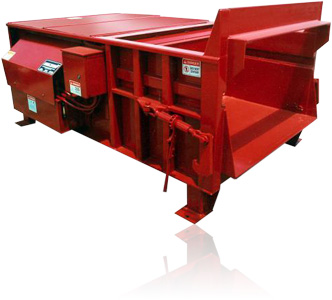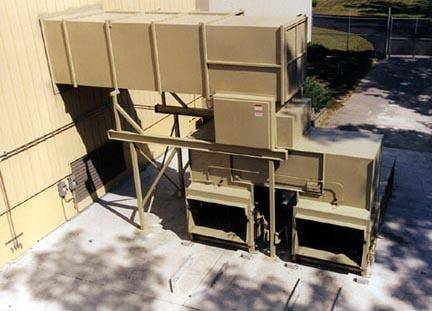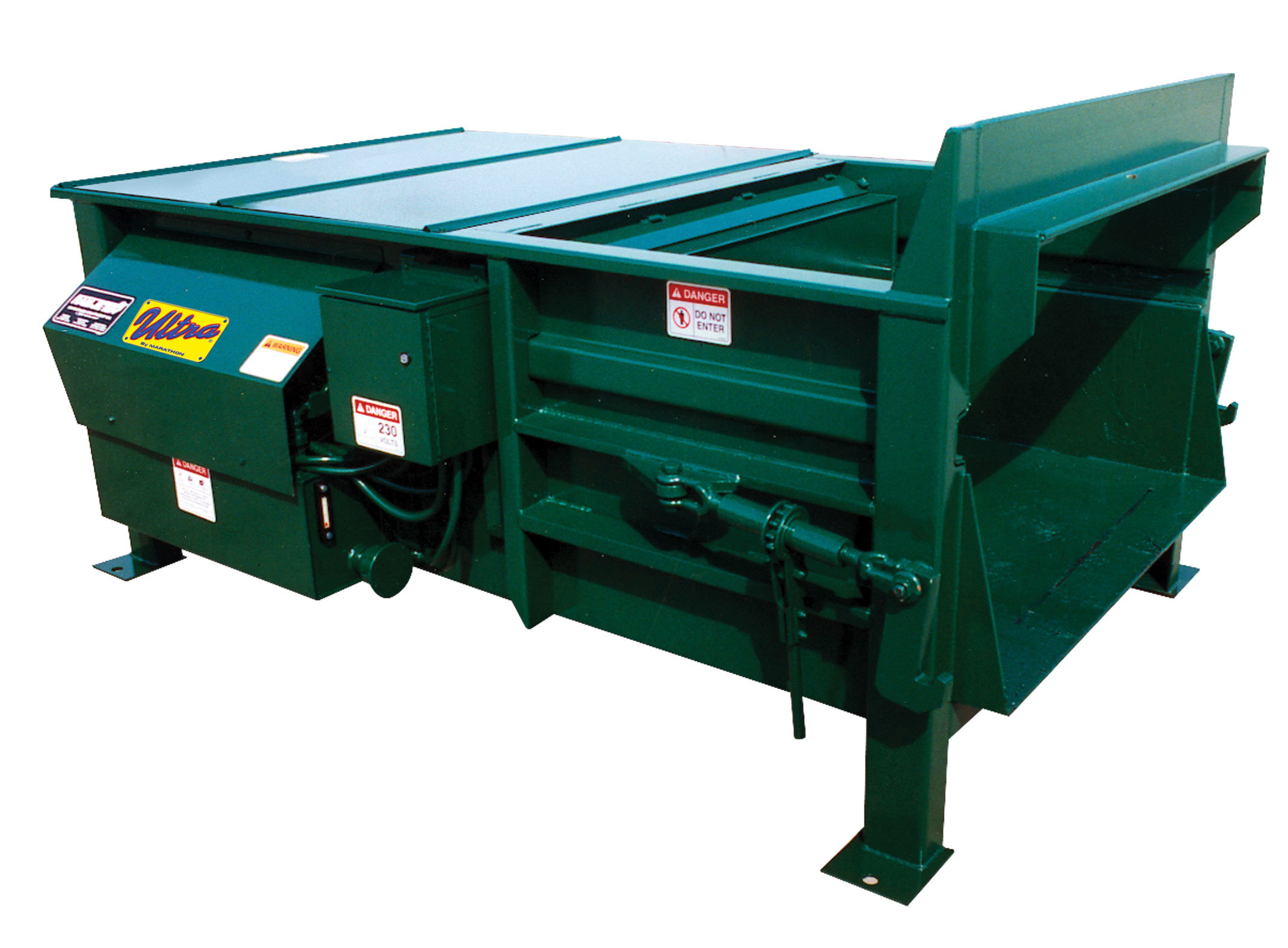How Industrial waste compaction equipment strengthens workplace efficiency
Wiki Article
Understanding the Various Uses Waste Devices in the Recycling Sector
The recycling market counts heavily on specialized waste devices to enhance processing and recuperation. Each device, from shredders to balers, offers a distinctive objective that enhances total performance. Comprehending these duties is crucial for enhancing sustainability initiatives. Commercial garbage compaction equipment. As innovation advancements, new technologies emerge, assuring to transform typical techniques. This evolution elevates important questions regarding the future of waste management and its influence on ecological preservation. What changes exist in advance for this critical sector?The Role of Shredders in Material Processing
Shredders play a vital role in the reusing industry by efficiently refining numerous sorts of waste products. These machines are developed to decrease big items, such as plastics, steels, and organic waste, into smaller, convenient pieces. This size reduction is necessary for subsequent recycling processes, as it enables much easier handling and sorting. Along with assisting in recycling, shredders improve safety by minimizing the threat of injury associated with taking care of cumbersome waste items.Additionally, shredders contribute to ecological sustainability by guaranteeing that products are processed in a manner that takes full advantage of resource recuperation. They can manage a varied variety of materials, making them versatile devices in waste administration facilities. The efficient operation of shredders not just streamlines the reusing procedure but likewise increases the overall effectiveness of waste diversion initiatives, advertising a round economy. Their importance in product processing can not be overstated, as they function as a foundational action towards sustainable waste administration practices.

Just How Balers Enhance Performance in Waste Monitoring
Balers considerably improve efficiency in waste management by compacting numerous materials right into bundles, which streamlines storage space and transportation. By compressing recyclables such as cardboard, plastics, and metals, balers considerably reduce the quantity of waste. This compression not just optimizes area in reusing centers however also lessens the variety of journeys called for to move materials, resulting in reduced fuel expenses and lowered ecological impact.Balers contribute to enhanced safety and security in waste management procedures. Compact bales are less complicated to pile and manage, reducing the risk of accidents connected with loosened materials. The uniform size of bales enables extra effective filling and dumping procedures, streamlining operations within recycling centers. In addition, balers can boost the overall quality of recyclables, as effectively compressed products are less most likely to be infected. Overall, balers play a crucial role in maximizing waste management practices, advertising sustainability in the recycling sector.
Conveyor Equipments: Streamlining the Recycling Process
Incorporating sophisticated machinery like balers greatly boosts waste monitoring procedures, but the performance of the reusing process is additionally enhanced through using conveyor systems. These systems play an important duty in the seamless transport of products within reusing facilities. By promoting the motion of different waste types, conveyor systems lessen hands-on handling and reduce the threat of contamination throughout the recycling procedure.Conveyor systems can be personalized to fit the unique designs and operational demands of reusing centers. Their capability to run constantly enables a steady flow of materials, improving productivity and making certain that sorting and processing tools obtains a constant supply.
Outfitted with attributes like adjustable rates and automated controls, conveyor systems can maximize the circulation of materials, substantially improving general effectiveness (Commercial garbage compaction equipment). Subsequently, these systems are crucial in modern recycling operations, contributing and enhancing processes to effective waste management
Sorting Devices: The Key to Product Healing
Arranging equipments are essential parts in the reusing sector, significantly enhancing the efficiency of material healing. These machines play a pivotal function in the splitting up of various recyclable products, enabling a streamlined procedure that makes the most of resource removal. By making use of innovative modern technologies, such as optical sensors and air classifiers, sorting makers can determine and categorize products based upon their make-up, weight, and size. This capability guarantees that steels, plastics, and paper products are properly separated, decreasing contamination and improving the high quality of recycled outcome.The operation of sorting machines significantly lowers the dependence on manual work, which can be both prone and lengthy to errors - Commercial garbage compaction equipment. In addition, the automation provided by these machines accelerates the overall recycling process, leading to higher throughput and raised functional efficiency. Consequently, sorting machines are vital in achieving lasting waste management goals, making it possible for the recycling sector to properly recover beneficial products while decreasing land fill dependence

Developments in Waste Devices for a Sustainable Future
Recent improvements in waste equipment are driving the reusing sector toward a much more sustainable future. Developments such as automated arranging systems, which make use of fabricated knowledge and artificial intelligence, boost effectiveness by properly determining and dividing recyclables. This leads to greater recuperation prices and decreased contamination. In addition, growths in condensing modern technology enable extra effective transport of materials, minimizing carbon footprints during transportation.Developments in shredding equipment improve the processing of complicated materials, making it possible for the recycling of products that were when deemed non-recyclable. The integration of renewable resource resources, like solar power, in waste handling facilities better adds to sustainability objectives. On top of that, developments in waste-to-energy innovations and biodegradable products are reshaping the landscape of waste monitoring. Jointly, these innovations represent a transformative change within the recycling market, promoting not just environmental security however also economic practicality for future generations.
Regularly Asked Concerns
What Kinds of Materials Can Waste Devices Deal With?
The sorts of materials waste tools can handle consist of plastics, steels, paper, glass, and organic waste. Each equipment kind is created for specific materials, enhancing performance and performance in arranging and processing numerous waste streams.How Typically Should Waste Devices Be Kept?

Exist Safety Worries With Making Use Of Waste Tools?
Safety and security worry about making use of waste equipment consist of possible injuries from mechanical breakdowns, direct exposure to harmful products, and poor training. Proper maintenance, normal inspections, and worker education are crucial to mitigate these risks effectively in any type of setup.What Is the Typical Lifespan of Recycling Equipment?
The ordinary lifespan of recycling devices normally Industrial waste compaction equipment ranges from 10 to two decades, depending upon elements such as use intensity, upkeep techniques, and technological developments, which can substantially affect sturdiness and performance with time.Just How Is Waste Tools Powered in Recycling Facilities?
Waste equipment in reusing centers is generally powered by electrical energy, though some makers might utilize alternate power sources like gas or diesel. This power allows effective processing and makeover of materials for reusing objectives.Shredders play an important role in the reusing industry by efficiently processing various kinds of waste products. They can handle a varied array of products, making them versatile tools in waste management facilities. Balers greatly improve efficiency in waste monitoring by compacting various materials into bales, which simplifies storage space and transport. The types of products waste devices can manage consist of plastics, steels, paper, glass, and organic waste. Safety and security issues with utilizing waste equipment include prospective injuries from mechanical malfunctions, exposure to hazardous products, and poor training.
Report this wiki page